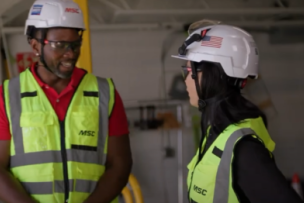Best Practices for Selecting the Types of PPE That Are Best for You
There are three key pillars for selecting the best PPE for the job, Zobov says.
No. 1: Conduct hazard assessments to better understand your work environment.
Conducting an initial risk and hazard assessment is probably the most important stage in assuring PPE compliance, and it’s a cornerstone in building a reliable safety management system.
“The likelihood and impact of potential hazards need to be precisely assessed and measured in order to support decision-making,” Zobov says.
No. 2: Match the PPE features to the identified hazards and risks.
PPE is considered the first line of defense against hazards. As soon as all risks and hazards are defined and measured, it’s time to prioritize them as primary and secondary hazards.
For instance, if there are primary chemical or biological hazards, the safety team must also take into account secondary hazards such as explosive atmospheres, hot or cold environments, and mechanical risks such as cuts, punctures, abrasions, falling, and visibility needs, Zobov says.
It is crucial to align PPE with the appropriate safety features to the potential risks, he points out.
No. 3: Make PPE Training Essential to Your Program.
Even the most adequate and expensive PPE, if used incorrectly, won’t work and will provide the user with a false sense of safety, Zobov says.
Training programs should ensure employees know why they are required to use PPE; instructions on how to properly wear and adjust PPE; and information about how often the gear must be replaced. Training should also explain limitations of use, donning and doffing, care and maintenance, useful life, and finally, disposal, he says.
READ MORE: Want to enhance your workplace safety training? Check out these 4 Must-Know Safety Training Courses for Metalworking Shops.
Setting a Six Sigma Safety Foundation
The Ansell Guardian program takes a Six Sigma approach to assessing a business’s safety needs and then defining a PPE solution tailored to that business.
During the first phase, the team will partner with the business to learn its objectives and understand its safety requirements—gathering information and data into its Guardian software program (Step 1).
Next, based on the data analytics and insights, the Guardian team will set a benchmark (Step 2). The benchmark will be used to measure improvements after safety changes are instituted.
The next two phases involve making necessary improvements (Step 3) and measuring against that benchmark (Step 4). One of the key elements of the Guardian approach is to help a business rationalize its PPE purchases and establish inventory management best practices to reduce overbuying and waste, Zobov says.
Often, the tactic is to start small in one part of a business’s operation, he explains. As the changes deliver quantifiable improvements, the business can then expand its PPE strategy more broadly (Step 5).
As a final phase of the Guardian solution, a business will continue to monitor its PPE program and apply the lessons learned, making adjustments and changes as necessary (Step 6).
Have a question about Ansell safety products? Ask your MSC representative.
Zobov says Ansell “converts this into a more practical view focused on each customer’s specific needs.” He likes to collapse the six steps into three broader buckets: engagement, execution and analysis.
That initial engagement phase is so critical, he says. It’s during this discovery that priorities are outlined and data is collected.
“We then begin to define the most optimal way to deliver solutions while keeping in mind customer needs and expectations,” Zobov says.
It’s also essential to involve workers in the planning. They are closest to the potential hazards, so it makes sense to solicit their input on what PPE and controls are most feasible and effective, Zobov adds.
How a PPE Strategy Pays Off
Ultimately, the main goal of these assessments and PPE strategies is to reduce injuries, lower costs and improve productivity, he says. “The biggest benefit of the Ansell Guardian assessment is the safety return on investment.”
There’s potential for companies to make and see improvements across seven focus areas:
Injury prevention: Reduce the risk and cost of injuries.
Cost reduction: Make business performance improvements to lower direct and indirect PPE costs.
Standardization: Ensure the optimum product selection across similar jobs.
SKU reduction: Minimize products purchased to improve working capital.
Controls: Optimize dispensing, use and disposal procedures.
Training: Educate employees on the proper selection, use and disposal of products.
Productivity and waste reduction: Improve output through waste elimination.
Ansell first launched its PPE assessment and planning approach in 1975, and it has evolved but been a fundamental part of the business ever since, Zobov says.
“Ansell Guardian’s message has not changed; we are not selling burgers or gloves, rather we are selling safety and productivity through expert analysis and consultation,” he says.




Talk to Us!
Leave a reply
Your email address will not be published. Required fields are marked *